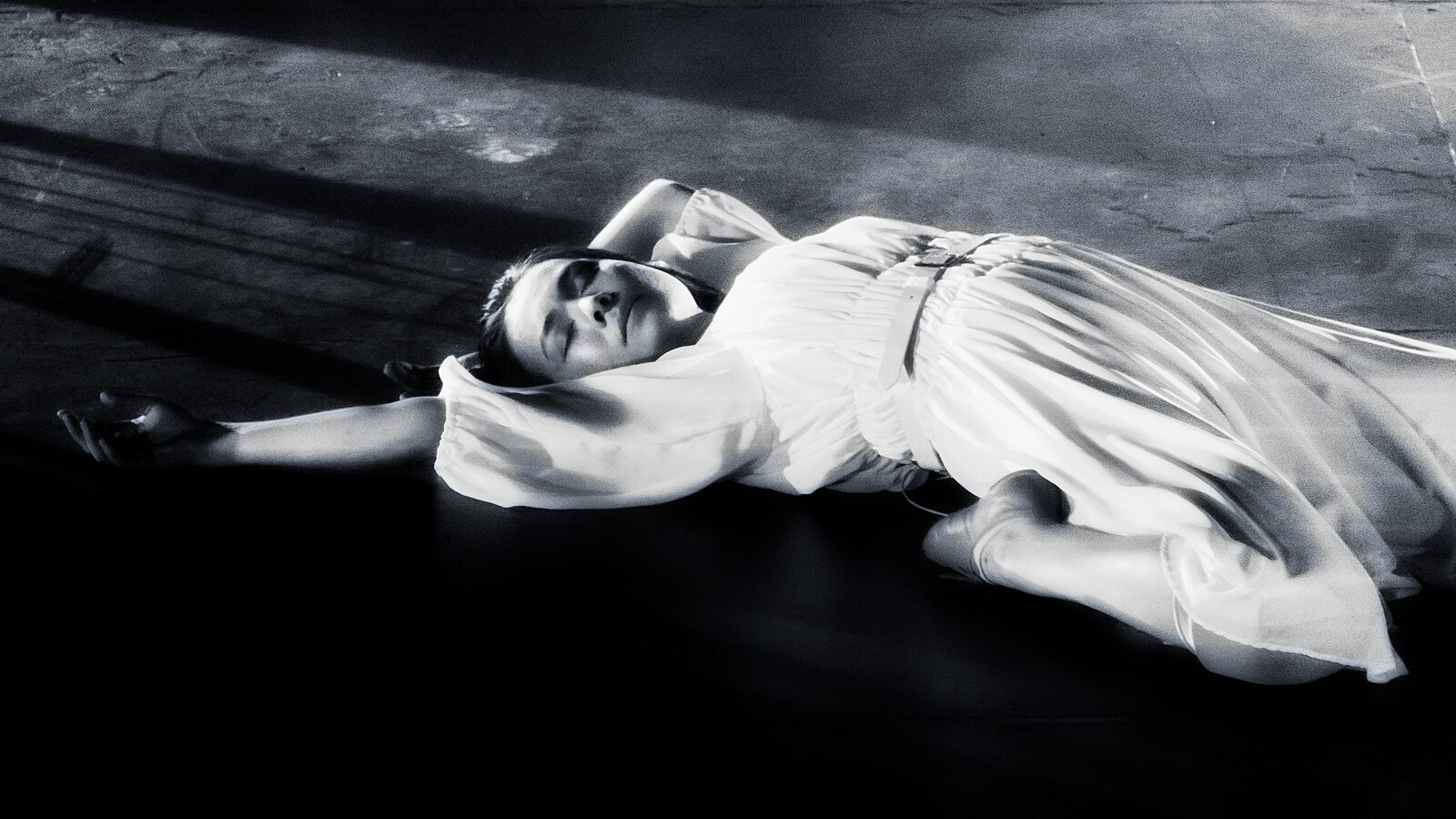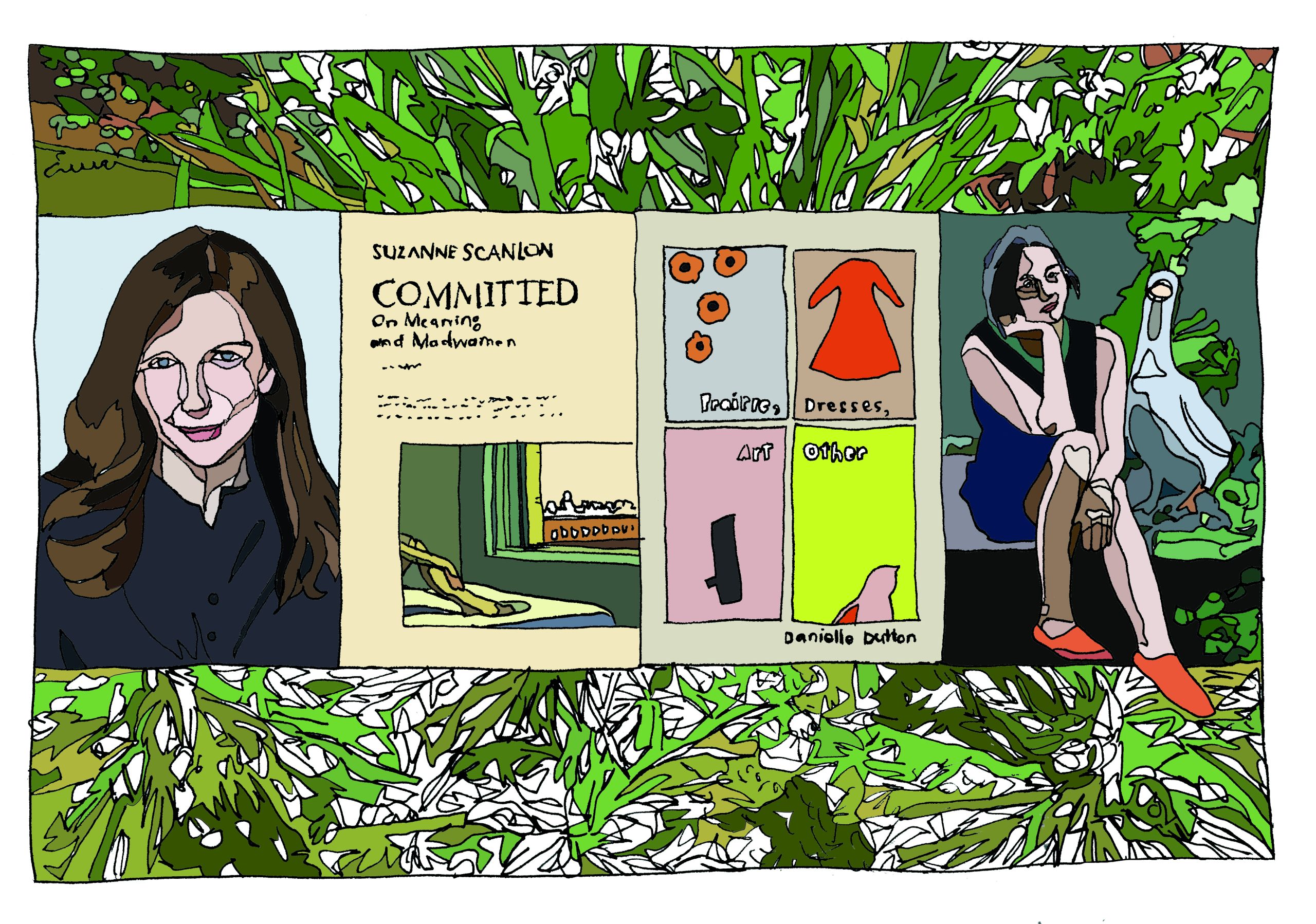Books & Culture
Victor Hugo’s Most Underappreciated Work Is This Lavish Four-Story House
Hauteville House, the home Hugo decorated during his exile in Guernsey, is the key to fully understanding his work
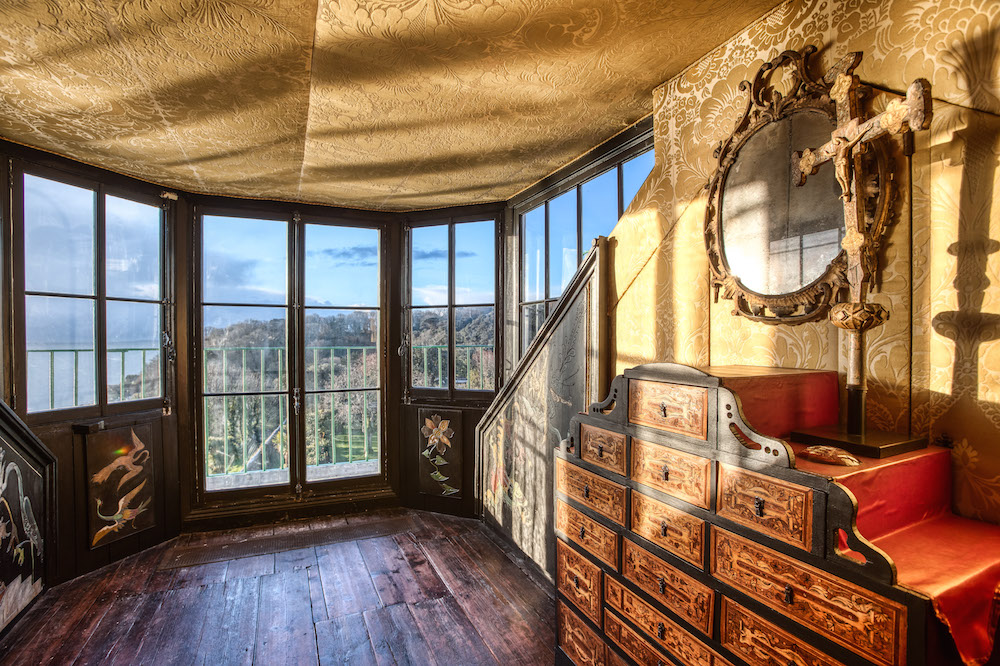
On the third floor of Hauteville House, a Georgian villa on the British Channel Island of Guernsey, a man’s head, carved from the faux ivory top of a walking stick, hovers ominously above an ornately carved bed. To the right of the bed is a red curtain, which conceals a secret hidden passage. A short flight of stairs behind the curtain leads to a “crystal palace,” a lookout toward the coast of France, with a four-sectioned glass roof. In the center of the room, a white marble statuette on a pedestal, recalling the Roman goddess Diana, is perched incongruously on a footed stove that is also painted white, the figure angelic and solitary against the blue sky visible through the panes. It is as if one is absorbed within the cloudscape, at eye level with celestial bodies. This top-floor enclave is where Victor Hugo slept during most of his period of exile on Guernsey, which lasted from 1856 to 1870; it is a modest alcove where, as on an old ship’s cabin, the furniture folds and disappears into the walls, and a spare twin bed is just enough for a writer absorbed in writing life, a writer thriving in exile.
In the “crystal palace,” standing before a small black table, Hugo wrote the novels L’Homme qui Rit (The Man Who Laughs), and Les Travailleurs de la Mer (Toilers of the Sea), and a multitude of poems. He also wrote the first part of a three-volume epic poem entitled La Légende des Siècles (The Legend of the Ages), which contains many clues to Hauteville House: a game of opposition and contrast, of shadow and light. “Hugo,” explains Hauteville curator and director Gérard Audinet, “arranged his house as a kind of autobiography, with many references to his personal life, his Parisian status before exile, and to his works.” The references are most evident in inscriptions in wood and stone, which appear in unexpected places high and low throughout. Hugo’s son Charles once referred to Hauteville House as an “autograph on three floors and a poem in several rooms.”
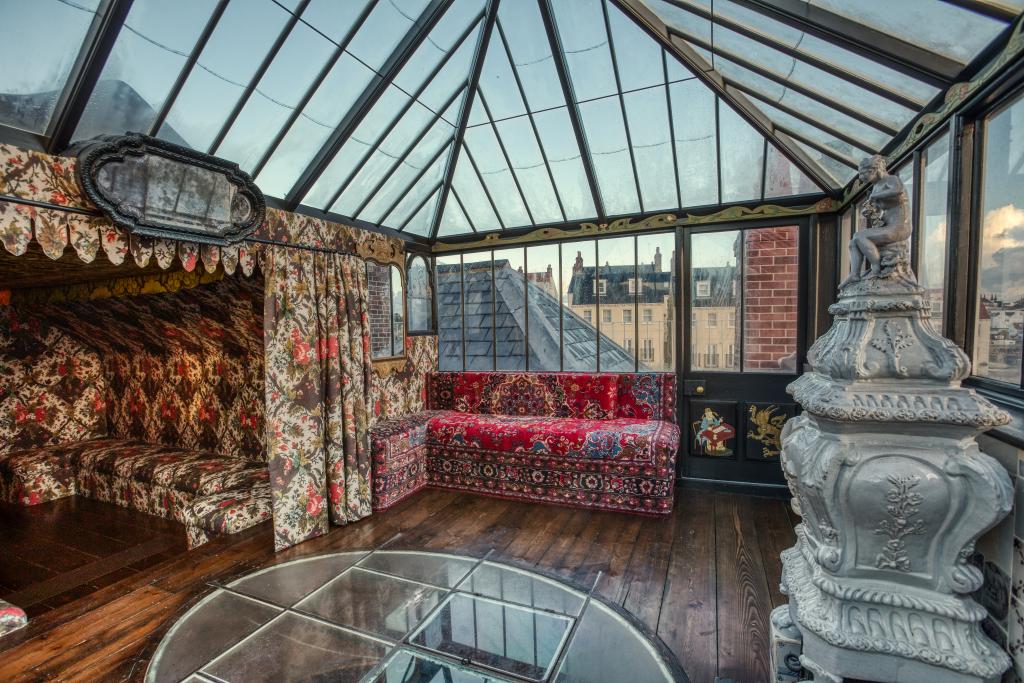
Hugo fled France in 1851, his vocal opposition to the reign of Napoleon III having made him a target of the regime. Louis-Napoleon, the nephew of Napoleon Bonaparte, had been elected legally, a seeming populist advocating for universal suffrage. However, once in office, he manipulated elections and stifled a free press, installing himself as the third Emperor of France via coup d’état. In 1852 Hugo arrived in Belgium, and then traveled to Jersey, the largest of the Channel Islands, before eventually settling on Guernsey in 1855, at age 49. From his upstairs loft as well as from his expansive garden, Hugo could see Castle Cornet, a 13th century fortress in St Peter Port’s southern harbor, as well as the surrounding Channel Islands, and beyond those, the coast of Normandy. Writing further clarified and strengthened his political ideals, such that when Hugo was granted amnesty to return to France in 1859, he refused, pronouncing, “I will return when freedom returns.” Hugo continued living in Hauteville House until France’s defeat in the Franco-Prussian War in 1870, which resulted in the fall of the Second Empire.
Hugo’s grandchildren and great-grandchildren gifted the home to the City of Paris in 1927 and billionaire François Pinault, who has described Hugo as “a universal voice of conscience and an enemy of oppression in every form,” recently financed a major renovation, overseen by Paris Musées. Now, Hauteville House is an intact legacy of a complex and pluralistic worldview, a literary object that embodies and breaks down the fundamental psychic conflicts between man and himself, man and society, and man and nature that Hugo examined in the writing he completed on Guernsey. In addition to La Légende des Siècles, L’Homme qui Rit, and Les Travailleurs de la Mer, Hugo completed Les Misérables at Hauteville House in 1862, an examination of class, power, dehumanization, and the inalterable human capacity for goodness and redemption that he’d first began in 1845. His time in exile reveals, writes scholar Patricia A. Ward, “an interest in the collective movement of humanity,” and a belief in an apocalyptic, revolutionary future, in which the individual, ultimately, achieves integration in society.
Hugo purchased Hauteville House, the only home he ever owned, with the proceeds from a book of poems entitled Les Contemplations, a meditation compelled by the unexpected death of his daughter Léopoldine at age 19. Ultimately, Hugo recomposed every single facing, designing every room to be a different act, scene, or universe; the tension on the lower floors leaks out in carved apertures and glazed windows and unexpected gaps that permit light in ceilings and stairwells, ultimately giving way to the ethereal upper floor.
La Légende des Siècles, the poem that is also a kind of key to Hauteville House, moves from the Biblical era to a modern utopia; parallels between the epic and the house’s decor, says house administrator Odile Blanchette, symbolize “the omnipresence of the human figure, the biblical references, Manichaeism, references to Justice and Liberty, and poems dedicated to the punishment of those who abused their power against innocents, as Napoléon III.” The first series of La Légende, published in 1859, writes Ward, indicates “how completely the opposition between progress and political oppression dominates Hugo’s interpretation of the medieval period.”
The master bedroom on the second floor, which conceals the passage to Hugo’s real bedroom, is medieval, romantic, and dramatic. This room emerges from a similarly dark “gallery of oak,” the two adjacent chambers occupying the width of the second floor. Hugo’s garden, an homage to the garden of his childhood on Rue des Feuillantines in Paris, and a model for the garden on Rue Plumet in Les Misérables, is visible from the windows below. The room is ornate and enigmatic, decorated between 1857 and 1859 with inscribed pillars with thick, winding grapevines, twisted bedpost columns, leatherwork studded with nails, a depiction of the sacrifice of Isaac on the footboard, a depiction of Dionysius carved into the headboard. The macabre tiny carved head, which is mounted on a minuscule wooden pedestal atop an elaborately carved oak headboard, only appears to be the head of a bearded and vital man when viewed from the left; on the right, the head is carved to look like a skull, its eye socket vacant, its cheek a concave hollow. Hugo etched Nox Mors Lux on the at the top of the headboard, the Latin for Night Death Light—he writes in Les Misérables, “Is there not in every human soul; was there not in the particular soul of Jean Valjean, a primitive spark, a divine element, incorruptible in this world, immortal in the next, which can be developed by good, kindled, lit up, and made resplendently radiant in which evil can never entirely extinguish?”
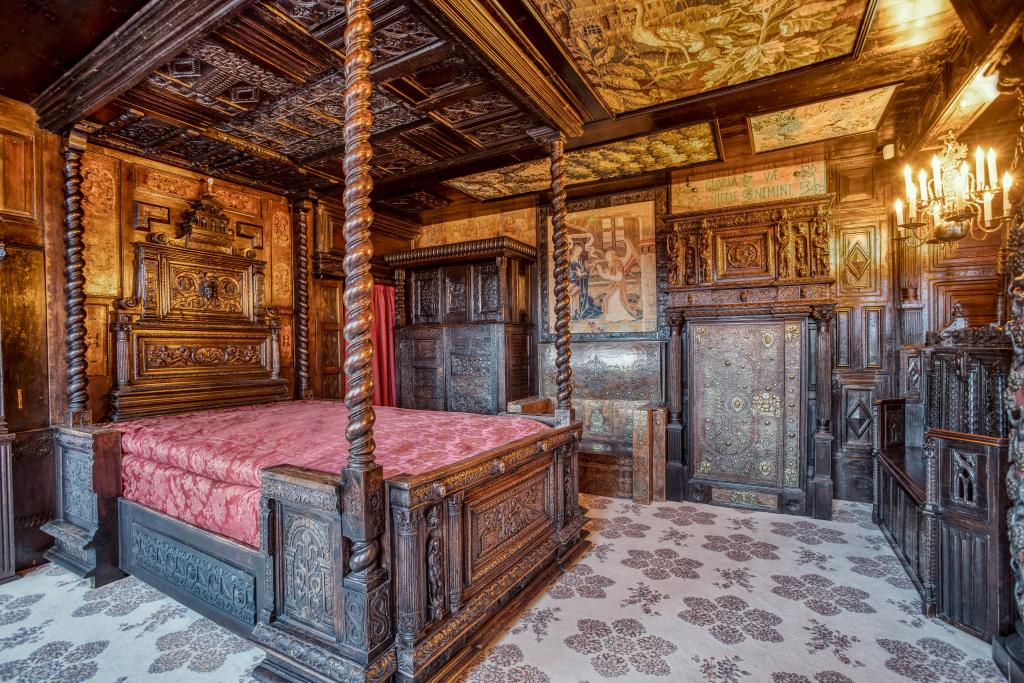
The dark palette of the bedroom and oak gallery complements a red drawing room on the first floor, bedecked in crimson damask, where wooden figures holding high torchères are posed on theatrical wooden pedestals. These spaces reveal, in some measure, Victor Hugo’s examination of the obstacles toward human progress, which might, as he describes in Les Misérables, “keep a poor man forever between a lack and an excess, a lack of work, and an excess of punishment.” In his vitriolic 1853 book of poems, odes, anthems, and songs rebuking the Second Empire, Les Châtiments (The Punishments), Hugo writes, “The heaviest burden is to exist without living.” In Hauteville House, Hugo created symbolic visual forms that contrast day and night, light and shadow, good and evil, beauty and darkness, work and dream, life and death, using dismantled and reassembled old chests, recombined Gothic elements, Flemish tapestries and Turkish rugs, mirrors, lacquer panels, Delftware, mahogany furniture, and decorative Japanese and Chinese porcelain. Artisans, carvers, and draftsmen created large-scale woodwork based on Hugo’s drawings and imagination. He built fireplaces to resemble cathedrals. He built a room made entirely of tapestries, the heavy textiles serving as walls and banquettes, one draping the ceiling, and one placed in front of a glazed window so that, like the beggar’s coat in Les Contemplations, light could pass through the seams and holes in the fabric.
These rooms all, ultimately, do eventually give way to light—in the blue room, adjacent to the red room, light strikes a mother of pearl table and two gloriously bright porthole mirrors with gilded frames, and luminous, shimmering tapestries embroidered with silver and gold jet beads. The counterbalance to darkness, for Hugo, was an unyielding belief in the limitless goodness and immutable potential within the human spirit. Early on in Les Misérables, Jean Valjean gazes at the bishop who has offered him shelter as he sleeps, before absconding with his silver, “The souls of the upright in sleep have a vision of a mysterious heaven, a reflection from this having shown up on the bishop. But it was also a luminous transparency, for this heaven was within him; this heaven was his conscience.” Later, he writes, “…cities produce ferocious men, because they produce corrupt men; the mountains, the forest, and the sea render man savage; they develop the fears, but yet, do not destroy the human.”

In conceiving the fate of Jean Valjean, sentenced to five years of prison for filching a loaf of freshly baked bread, and ultimately to nineteen years for repeated attempts at escape, Hugo questioned, “What becomes of the handful of leaves of the young tree when it is sawn at the trunk?” In July 14, 1870, Hugo planted an oak in the long middle passage of the back garden at Hauteville House. He installed a pond, the “Fontaine aux serpents,” that came from the Place Royale, and a bench built so he could look to the coast of France.
On August 5th, 1870, Hugo left Guernsey and waited in Brussels with his mistress, Juliette Drouet, for the declaration of the French republic. Hugo would come back to Guernsey three times after that, the longest visit between 1872 and 1873, to finish his last revolutionary novel, Ninety-Three, published in 1874. His final visit would last from July 5th to November 9th, 1878. The decoration of Hauteville House, particularly the large carved oak pieces and painted panels, was finished after 1864, explains Audinet. In later years, repairs and improvements, for the rugs in particular, were necessary due to deterioration. The Paris Musées completed a comprehensive renovation, which exactingly preserves Hugo’s decor, in April of 2019.
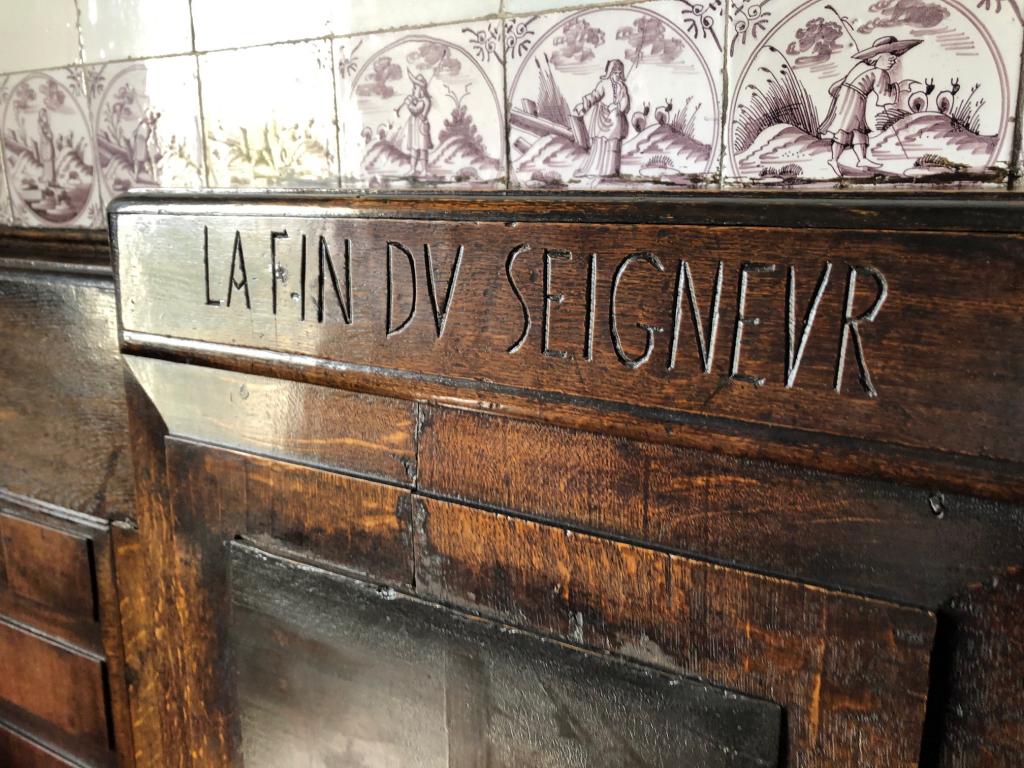
For a writer, perhaps the most haunting and moving relics in the house are Hugo’s inscriptions, scraped and poked into wood and concrete: the names of the great writers who stirred him and of mythological and Biblical figures that shaped the cycles of imagery in his texts, and passionate declarations of his most fundamental beliefs. Above the dining room entry, he inscribed, “Life Is An Exile, Exile Is Life.” On the dining room chairs, “Hope is my strength.” On a wall bench he etched, “The End of the Soldier,” “The End of the Priest,” “The End of the Lord”—symbols of the demise of the “ancient regime,” or monarchy, explains Audinet. A great inscription over the fireplace speaks of the Virgin and Christ as a wish for the advent of the Republic, reading in part, “The people are small in your sacred arms, o liberty.” On the underside and interior of benches and recovered pews, there are names: Luther, Christ, Moise, Job, Isaie, Homer, Shakespeare, Dante, Moliere. And, in the garden, on a rear stone wall, is the phrase “Immensité dit l’être, éternité dit l’âme.” This is from a poem in Les Contemplations entitled “Magnitudo Parvi,” which can be translated to mean, “the magnitude of small things.” Addressing Léopoldine, Hugo meditates on eternity, and the cosmos. Translations differ slightly, but perhaps the most apt is, The soul claims eternity, the being claims immensity.
It is through these inscriptions, and in conceiving of Hauteville House as a total work of art, that Hugo claimed for himself a notion he penned in Notre-Dame de Paris (The Hunchback of Notre Dame), “architecture is thought written in stone.” In his fifteen-year exile, Hugo exercised the kind of limitless freedom of individuality and creativity that he believed possible for humanity at large. What is left behind at Hauteville House is not just a complex and symbolic décor, or abundant evidence of Hugo’s modernity, but also a fearless and avant garde kind of self-expression. Hugo gave his inner life an external structure, a kind of sculptural identity, which is now the legacy of a fiercely original humanitarian and artist.





